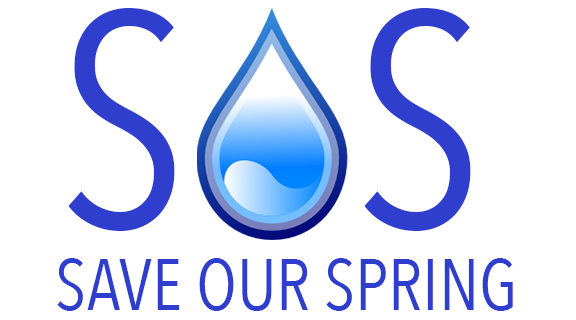https://www.hamilton.ca/home-property-and-development/water-sewer/arsenic-limits-in-drinking-well-water
Arsenic limits in Drinking Well Water
On January 1, 2018 the limit in the Ontario Drinking Water Standard (ODWS) for arsenic in drinking water wells will be lowered from the current limit of 0.025 mg/L to 0.010 mg/L.
What is Arsenic?
Arsenic (As) is a naturally occurring element. Trace amounts of arsenic are found in food, water, soil and air. Breakdown and erosion of arsenic-containing minerals in soils and rock, agricultural run-off, mining operations and industrial processes are all potential sources of arsenic in surface and ground water. Amounts of arsenic found in drinking water are generally higher in groundwater than surface water sources.
What are the Ontario Drinking Water Standards?
These standards set the maximum concentrations of chemicals that are allowed in public drinking water. They must be met by all public (regulated) drinking water systems and are used as recommended limits for private drinking water wells.
The provincial arsenic standard or limit (0.025 mg/L) is being lowered to align with the more protective federal limit (0.10 mg/L) which is based on the best worldwide arsenic exposure and health information available to Health Canada. The current Health Canada Canadian Drinking Water Quality Guideline limit for Arsenic is already set at 0.010mg/L. The World Health Organization (WHO) limit is also set at 0.010 mg/L.
What are the health effects of high Arsenic levels?
Long-term exposure to arsenic from drinking-water and food can cause cancer and skin lesions. It has also been associated with developmental effects, cardiovascular disease, neurotoxicity and diabetes. (3)
Short term exposure to very high levels of arsenic can lead to abdominal and muscular pain, diarrhea and vomiting, skin rash and numbness.
What is known about the level of Arsenic in well water in Hamilton?
Public Health Services has tested arsenic concentrations in 100 regulated wells in Hamilton. Traces of arsenic were detected in 25 per cent of the samples. Concentrations ranged from 0.001mg/L to 0.020mg/L averaging 0.006 mg/L.
Fourteen Provincial Ground Monitoring Network (PGMN) and 50 MOECC regulated wells were tested for arsenic. None had levels above the new ODWS. Of the wells tested by Public Health a well in each of the following areas had arsenic concentrations above the new ODWS of 0.010mg/L:
- The intersection of Sulphur Springs Road and Governors Road
- The Copetown area
- The Lynden area
- Trinity Church Road and Tisdale Road area south of Kirk and Chippewa Roads to Hall Road
Public Health Services advises residents using private wells in these areas consider testing their drinking water for arsenic.
How can I test my water for Arsenic?
Arsenic testing of private drinking water wells can be undertaken via a private licenced environmental laboratory on a fee-for-service basis. There are several in the region. They can be found in the Yellow Pages under ‘laboratories’ or by visiting the Ministry of Environment and Climate Change (MOECC) website www.ontario.ca/page/list-licensed-laboratories
Private wells with arsenic concentrations above the provincial standard can be reduced via three recognised options: reverse osmosis, anionic exchange, and iron oxide. All options have advantages and disadvantages and should be considered on a site-specific basis due to variations in groundwater chemistry. Public Health Services advises that a rural water treatment specialist with a good knowledge of water chemistry testing and with the ability to conduct groundwater chemistry testing of the client’s water be consulted on the type of system best suited for a particular well.
Before deciding on an arsenic reduction device, the well water should be tested to determine general water chemistry and to verify the concentration and valency of the arsenic (As III or V). Testing should also include screening for the presence and concentration of any competing ions (e.g., fluoride, iron, sulphate, silicate) and organic matter in the water, which could interfere with arsenic removal.(1)
Costs for arsenic treatment systems and ongoing operation can range depending on water conditions, vendors, and makes/models of systems. Public Health Services has not priced any of the arsenic reduction systems that are listed below.
Public Health Services cannot recommend an installer (water treatment specialist), or a system, make/model over another.
Are there treatment systems that remove Arsenic?
Reverse Osmosis (RO)
Anionic Exchange
Iron Oxide
What are treatment costs?
Costs can vary depending on the chemical composition of the groundwater, type of arsenic removal required and type of system chosen. Public Health Services provides the following cost for one arsenic reduction system only as reported to us by the installer. As a very rough guide, an iron oxide system designed for and recently installed in a regulated small drinking water system in Hamilton (similar to a large household system) cost approximately $825 plus installation.
Contact us
Safe Water Infoline at 905-546-2189
Monday to Friday 8:30 am to 4:30 pm
Sources
(1) Health Canada: Guidelines for Drinking Water Quality: Guideline Technical Document – Arsenic
(2) State of Oregon Health Authority: Arsenic Removal
(3) World Health Organisation (WHO) Arsenic Fact Sheet, 2016
Views: 34

I find it curious that the current interest in closing the well coincides with latest update to bottling legislation …
Labeling Requirements for Prepackaged Water and Ice – Food …http://www.inspection.gc.ca/food/labelling/food-labelling-for-industry/prepackaged-water-and-ice/eng/1392050209634/1392050277168
updated … “May 15, 2017 … However, the water need not meet the requirements for mineral or spring water if it is described and represented as bottled water, table water or …”
So I will attend the meeting with a bottle of Sulphur Springs water that I shall describe and represent as bottled water, table water or …
Eva Marsh COPETOWN